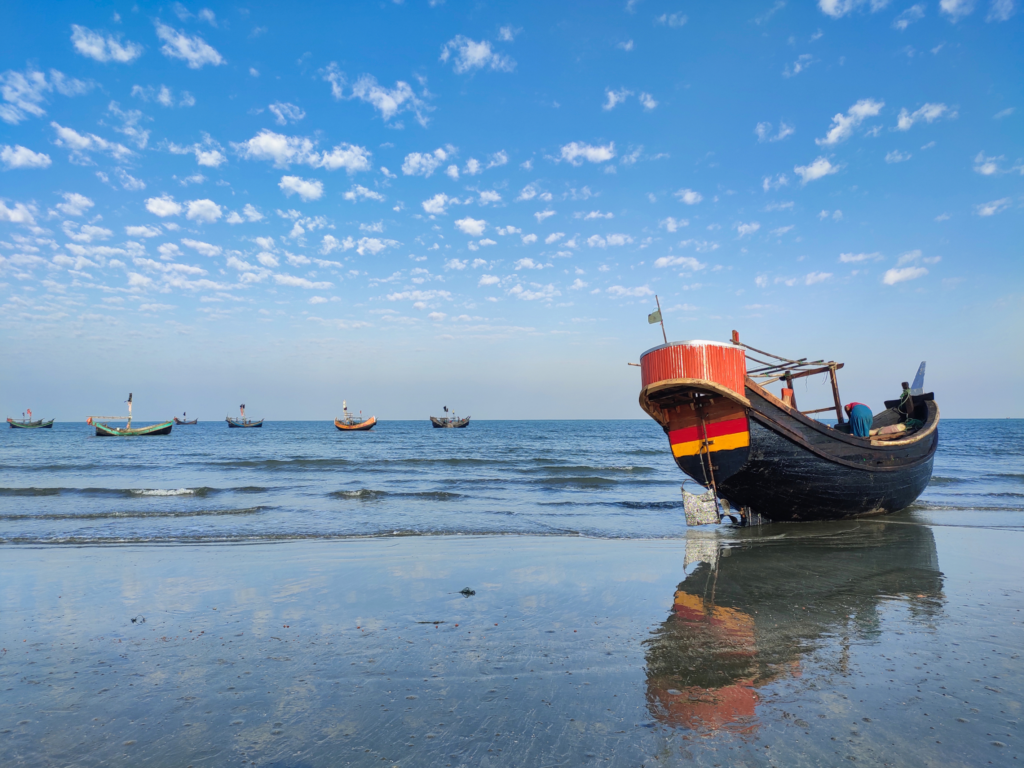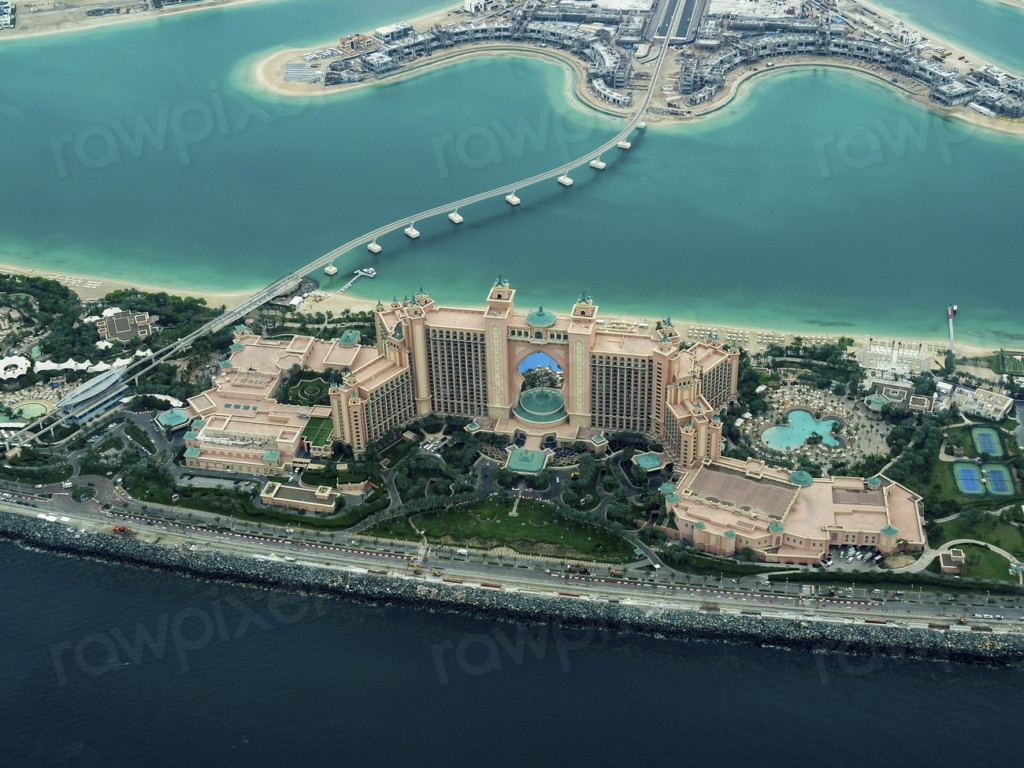Introduction
Saint Martin’s Island, known as “Narical Gingira” in Bengali, is a small yet breathtakingly beautiful island located in the Bay of Bengal, off the southern coast of Bangladesh. Renowned for its pristine beaches, turquoise waters, and vibrant coral reefs, Saint Martin’s Island is a hidden gem that captures the essence of natural beauty and tranquility. This article delves into the island’s geographical features, cultural significance, history, tourism aspects, environmental concerns, and the unique experiences it offers to visitors.
1. Geographical Features and Location
a. Location and Accessibility
Saint Martin’s Island is situated approximately 9 kilometers off the southern coast of Bangladesh and is the southernmost point of the country. It lies at the mouth of the Naf River, near the border with Myanmar (Burma). The island is part of the Teknaf Upazila in the Cox’s Bazar District. Accessible only by boat from the mainland town of Teknaf, the island offers a unique adventure from the moment visitors embark on their journey.

b. Physical Characteristics
The island is relatively small, covering an area of about 8 square kilometers. It is characterized by its sandy beaches, shallow waters, and a coral reef that stretches along the coast. The landscape of Saint Martin’s Island is a blend of sandy shores, rocky outcrops, and lush green vegetation. Its warm, tropical climate and clear blue waters make it an ideal destination for beach lovers and nature enthusiasts.
c. Climate
Saint Martin’s Island experiences a tropical monsoon climate with three distinct seasons: a hot and humid summer, a rainy monsoon season, and a mild winter. The best time to visit the island is from November to March, when the weather is pleasant and the sea is calm, making it perfect for beach activities and exploring the coral reefs.
2. Historical Significance
a. Early Inhabitants
The history of Saint Martin’s Island dates back to ancient times. Historically, it was inhabited by indigenous communities known as the “Mro” people. These early inhabitants lived a simple life, relying on fishing and farming for their sustenance. Their traditional ways of life and cultural practices have left a lasting impact on the island’s heritage.

b. Colonial Era
During the colonial period, Saint Martin’s Island was under British rule. It was primarily used as a resourceful area for its strategic location in the Bay of Bengal. The British recognized the island’s potential for trade and communication but did not significantly develop it.
c. Modern Era
In modern times, the island has gained attention as a tourist destination. The government of Bangladesh, along with various conservation groups, has worked towards preserving the island’s natural beauty while promoting sustainable tourism. The island’s status as a protected area helps safeguard its unique ecosystem and biodiversity.
3. Cultural Heritage
a. Local Communities
The primary residents of Saint Martin’s Island are fishermen and their families. The local community is known for its warm hospitality and simple lifestyle. They follow traditional practices and customs, which include unique fishing techniques and the preparation of local cuisine. The island’s culture is deeply rooted in its maritime heritage and has a distinct blend of various influences.

b. Traditional Festivals and Practices
The island hosts several traditional festivals and events throughout the year. These include local fairs, religious ceremonies, and cultural performances. One notable festival is the “Boishakhi Mela,” which celebrates the Bengali New Year. During this time, the island comes alive with music, dance, and traditional foods, offering visitors a glimpse into the local culture and traditions.
c. Craftsmanship and Cuisine
Saint Martin’s Island is known for its traditional crafts, including handmade jewelry, textiles, and woven baskets. The local cuisine features a variety of seafood dishes, reflecting the island’s maritime culture. Popular dishes include fresh fish curries, crab, and shrimp, prepared with local spices and herbs.
4. Tourism and Attractions
a. Beaches and Natural Beauty
Saint Martin’s Island is renowned for its stunning beaches. The main attraction is its unspoiled sandy shores, which provide an ideal setting for relaxation and leisure. The beaches are lined with palm trees and offer panoramic views of the Bay of Bengal. Visitors can enjoy activities such as swimming, sunbathing, and beachcombing.

b. Coral Reefs and Marine Life
The coral reefs surrounding Saint Martin’s Island are a major draw for snorkeling and diving enthusiasts. The reefs are home to a diverse range of marine life, including colorful fish, sea turtles, and various species of coral. The clear waters provide excellent visibility, allowing visitors to explore the underwater world and witness the vibrant marine ecosystem.
c. Eco-Tourism Initiatives
In recent years, there has been a growing focus on eco-tourism in Saint Martin’s Island. Efforts are being made to promote sustainable tourism practices that protect the island’s natural environment. These initiatives include waste management programs, conservation efforts for marine life, and community-based tourism projects that involve local residents.
5. Environmental Concerns
a. Threats to Coral Reefs
One of the major environmental concerns for Saint Martin’s Island is the health of its coral reefs. Coral reefs are sensitive to changes in water temperature, pollution, and human activity. Increasing tourism and unsustainable practices pose a threat to these vital ecosystems. Conservation organizations are working to address these issues through awareness campaigns and protective measures.

b. Impact of Climate Change
Climate change is another significant threat to Saint Martin’s Island. Rising sea levels and extreme weather events can impact the island’s shoreline and ecosystem. Efforts are being made to monitor and mitigate the effects of climate change through research and adaptation strategies.
c. Pollution and Waste Management
Pollution, especially plastic waste, is a growing concern on the island. The increase in visitor numbers has led to a rise in waste, which affects the island’s cleanliness and marine life. Initiatives to improve waste management and reduce plastic use are crucial in preserving the island’s natural beauty.
6. Travel Tips and Recommendations
a. How to Reach Saint Martin’s Island
The primary way to reach Saint Martin’s Island is by boat from Teknaf, a town in the Cox’s Bazar District. Boats and ferries operate regularly, with schedules depending on the season and weather conditions. It is advisable to book tickets in advance and check weather forecasts before traveling.
b. Where to Stay
Accommodation options on the island range from budget guesthouses to more comfortable resorts. It is recommended to book your stay in advance, especially during peak tourist seasons. Eco-friendly lodges and homestays offer a unique experience and allow visitors to immerse themselves in the local culture.

c. Activities and Experiences
Visitors to Saint Martin’s Island can enjoy a variety of activities, including:
- Snorkeling and Diving: Explore the vibrant coral reefs and marine life.
- Beach Relaxation: Spend time on the beautiful sandy beaches and enjoy the serene environment.
- Local Cuisine: Taste fresh seafood and traditional dishes.
- Cultural Interaction: Engage with local residents and experience their way of life.
d. Responsible Tourism
When visiting Saint Martin’s Island, it is important to practice responsible tourism. This includes respecting local customs, minimizing environmental impact, and supporting conservation efforts. Visitors should follow guidelines for waste disposal and avoid disturbing marine life.
7. Future Prospects and Developments
a. Sustainable Tourism Development
The future of tourism on Saint Martin’s Island hinges on sustainable development. Balancing tourism with conservation efforts will be key to preserving the island’s natural beauty. Ongoing projects aim to promote eco-friendly practices and involve local communities in tourism management.
b. Conservation Initiatives
Conservation organizations and government bodies are working to protect the island’s environment. These initiatives focus on safeguarding coral reefs, managing waste, and mitigating the effects of climate change. Collaboration with local communities is essential for the success of these efforts.
c. Community Empowerment
Empowering local communities through tourism can contribute to the island’s sustainable development. Training and education programs, along with community-based tourism projects, can enhance the livelihoods of residents while preserving their cultural heritage.
8. Conclusion
Saint Martin’s Island is a treasure trove of natural beauty and cultural richness. Its pristine beaches, vibrant marine life, and welcoming communities make it a unique destination for travelers. As tourism grows, it is crucial to prioritize environmental conservation and responsible practices to ensure the island remains a pristine paradise for future generations. The island’s charm and serenity continue to captivate visitors, offering a glimpse into a world where nature and culture harmoniously coexist.

